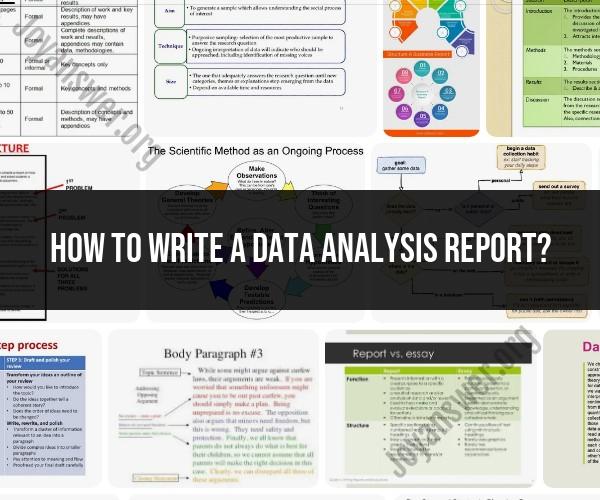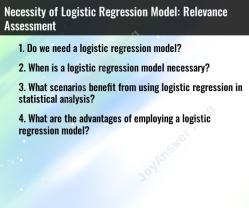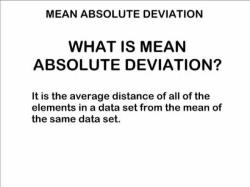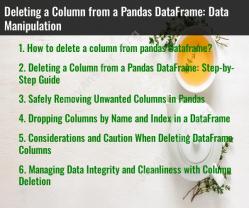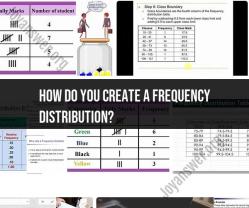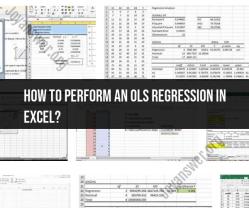How to write a data analysis report?
Writing a data analysis report is an essential part of the data analysis process, as it helps convey your findings, insights, and recommendations to your audience. Here are some best practices to follow when crafting a data analysis report:
Understand Your Audience:
- Determine who your target audience is. Are you writing for technical experts, managers, stakeholders, or a general audience? Tailor your report's content and language to match the audience's knowledge and needs.
Start with a Clear Structure:
- Begin with a well-defined structure. A typical data analysis report should include sections like an executive summary, introduction, methodology, data presentation, analysis, findings, conclusions, and recommendations.
Executive Summary:
- Start with an executive summary that provides a concise overview of the most critical findings and recommendations. This should be a high-level summary for busy readers who may not have time to go through the entire report.
Introduction:
- Introduce the report's purpose, scope, and objectives. Explain the background and context of the data analysis project. Define any key terms and assumptions.
Methodology:
- Describe the methods and techniques used for data collection, data cleaning, and analysis. Detail the data sources, tools, and algorithms employed.
Data Presentation:
- Visualize the data effectively. Use charts, graphs, and tables to illustrate the data. Choose the most appropriate types of visualizations to represent your data accurately.
Analysis:
- Interpret the data. Describe trends, patterns, and anomalies you observed. Explain the statistical or analytical methods used. Use data-driven arguments to support your claims.
Findings:
- Present your key findings in a clear and structured manner. Use bullet points or numbered lists to make it easy for the reader to absorb the information.
Conclusions:
- Summarize the main takeaways from your analysis. What insights did you gain from the data? Address the research questions or objectives outlined in the introduction.
Recommendations:
- Offer actionable recommendations based on your analysis. What actions should be taken in response to the findings? Make your recommendations clear and specific.
- Cite Sources and Acknowledge Limitations:
- Provide proper citations for data sources, references, and tools used in your analysis. Acknowledge any limitations in your data, methodology, or analysis.
- Use Clear and Concise Language:
- Write in plain and concise language. Avoid jargon and technical terms that the audience may not understand. Use simple, straightforward sentences.
- Proofread and Edit:
- Carefully proofread your report for grammar, spelling, and formatting errors. Ensure consistency in style and formatting throughout the document.
- Include Appendices:
- If necessary, include appendices with supplementary information, such as raw data, code, or detailed methodology explanations.
- Visual Appeal:
- Make the report visually appealing by using a consistent and professional layout, including headers, subheadings, and page numbers.
- Review and Feedback:
- Before finalizing the report, have it reviewed by peers or experts in the field to ensure accuracy and clarity.
- Follow a Style Guide:
- If your organization or field has a style guide, adhere to it for consistency in terminology, formatting, and citation.
- Maintain Data Privacy and Security:
- Ensure that the report complies with data privacy and security regulations. Avoid sharing sensitive or personally identifiable information.
By following these best practices, you can create a data analysis report that effectively communicates your findings and insights to your intended audience, facilitating data-driven decision-making.
How to write an effective data analysis report?
To write an effective data analysis report, you should:
- Start with a clear and concise goal. What do you want your audience to learn from your report? Once you know your goal, you can tailor the rest of your report to achieve it.
- Gather and organize your data. Make sure you have all of the data you need to support your goal. Once you have your data, organize it in a way that makes it easy to analyze and interpret.
- Analyze your data. Use appropriate statistical methods to analyze your data and identify any trends or patterns.
- Interpret your findings. What do your findings mean? How do they relate to your goal?
- Communicate your findings clearly and concisely. Write your report in a way that is easy to understand and engaging. Use visuals to support your findings and make them more memorable.
What are the key components and structure of a data analysis report?
A typical data analysis report includes the following components:
- Executive summary: The executive summary is a brief overview of the report that includes the key findings and conclusions.
- Introduction: The introduction provides background information on the topic of the report and states the goal of the report.
- Methodology: The methodology section describes how the data was collected and analyzed.
- Results: The results section presents the findings of the data analysis.
- Discussion: The discussion section interprets the findings and discusses their implications.
- Conclusion: The conclusion summarizes the key findings of the report and provides recommendations for future action.
Can you explain the process of organizing and presenting data in a report?
To organize and present data in a report, you should:
- Clean your data. This means removing any errors or inconsistencies from your data.
- Choose the right data visualization. There are many different types of data visualizations, such as charts, graphs, and tables. Choose the data visualization that best communicates your findings to your audience.
- Label your data visualizations clearly and concisely. Make sure your audience understands what they are looking at.
- Use visuals to support your findings. Don't just present data visualizations without explaining what they mean.
- Tell a story with your data. Your data visualizations should help you tell a story about your findings.
Are there best practices for visualizing data in a data analysis report?
Yes, there are a few best practices for visualizing data in a data analysis report:
- Use the right chart type. Choose the chart type that best communicates your findings to your audience.
- Label your charts and graphs clearly. Make sure your audience understands what they are looking at.
- Use consistent colors and fonts. This will make your visuals more visually appealing and easier to understand.
- Avoid cluttering your charts and graphs. Too much data can be overwhelming and difficult to interpret.
- Use annotations to highlight key findings.
How to interpret and draw conclusions from data analysis findings?
To interpret and draw conclusions from data analysis findings, you should:
- Look for trends and patterns in your data. What do these trends and patterns mean?
- Compare your findings to previous studies or other benchmarks. This will help you determine whether your findings are significant.
- Consider the limitations of your data. No data set is perfect. Be aware of the limitations of your data and how they may affect your findings.
- Be objective in your interpretation of the data. Don't let your personal biases influence your conclusions.
Once you have interpreted your findings, you can draw conclusions about what your data means. Your conclusions should be based on the data and your analysis of it.
Here are some additional tips for writing an effective data analysis report:
- Write in a clear and concise style. Avoid using jargon and technical language that your audience may not understand.
- Proofread your report carefully before submitting it. Make sure there are no errors in grammar or spelling.
- Get feedback from others. Ask someone else to review your report and give you feedback.
By following these tips, you can write an effective data analysis report that will communicate your findings clearly and concisely to your audience.
